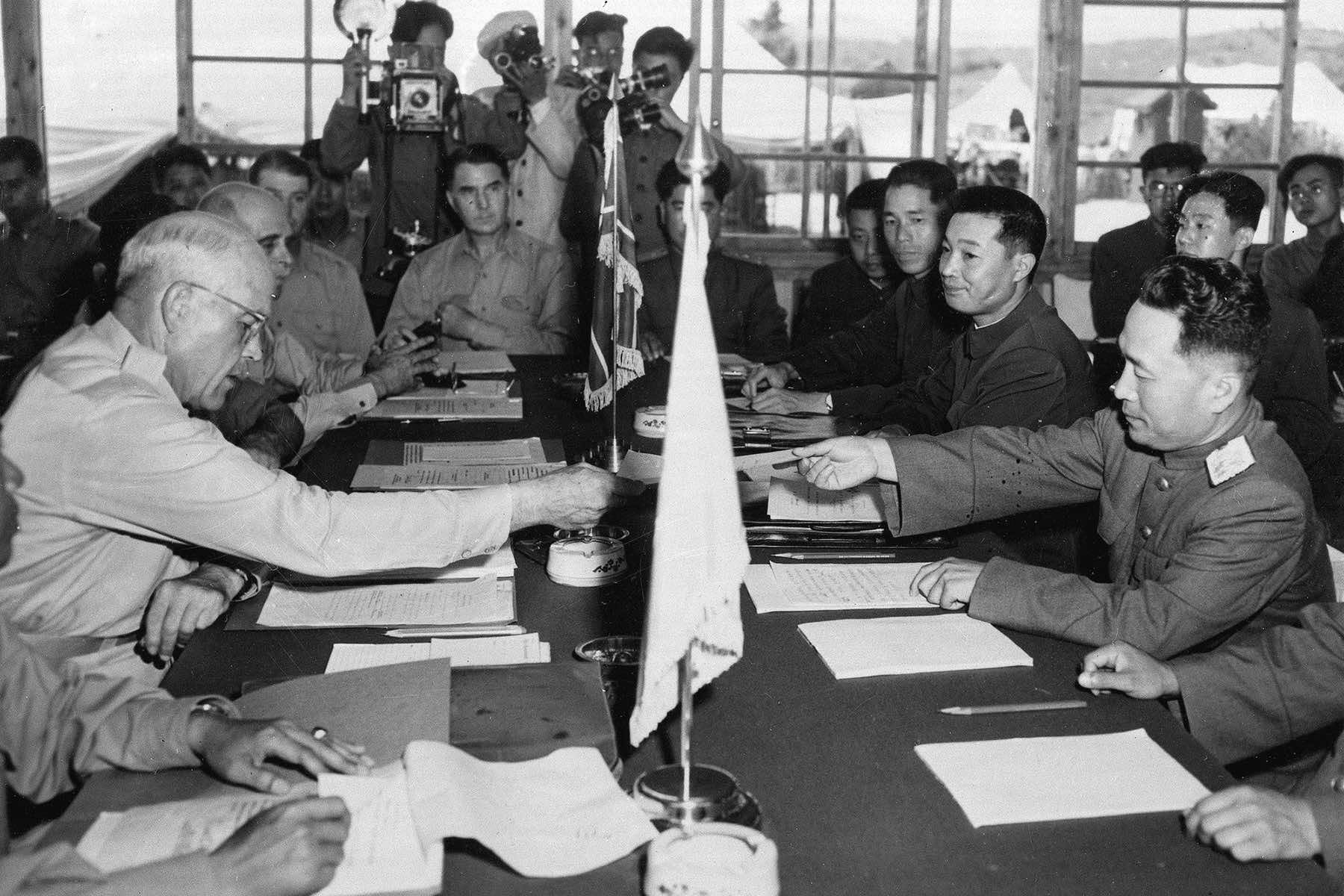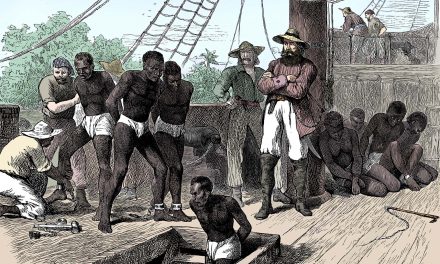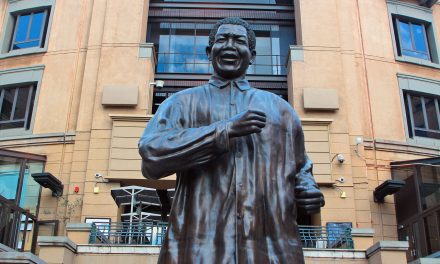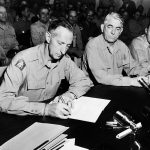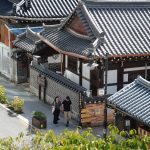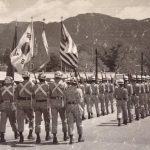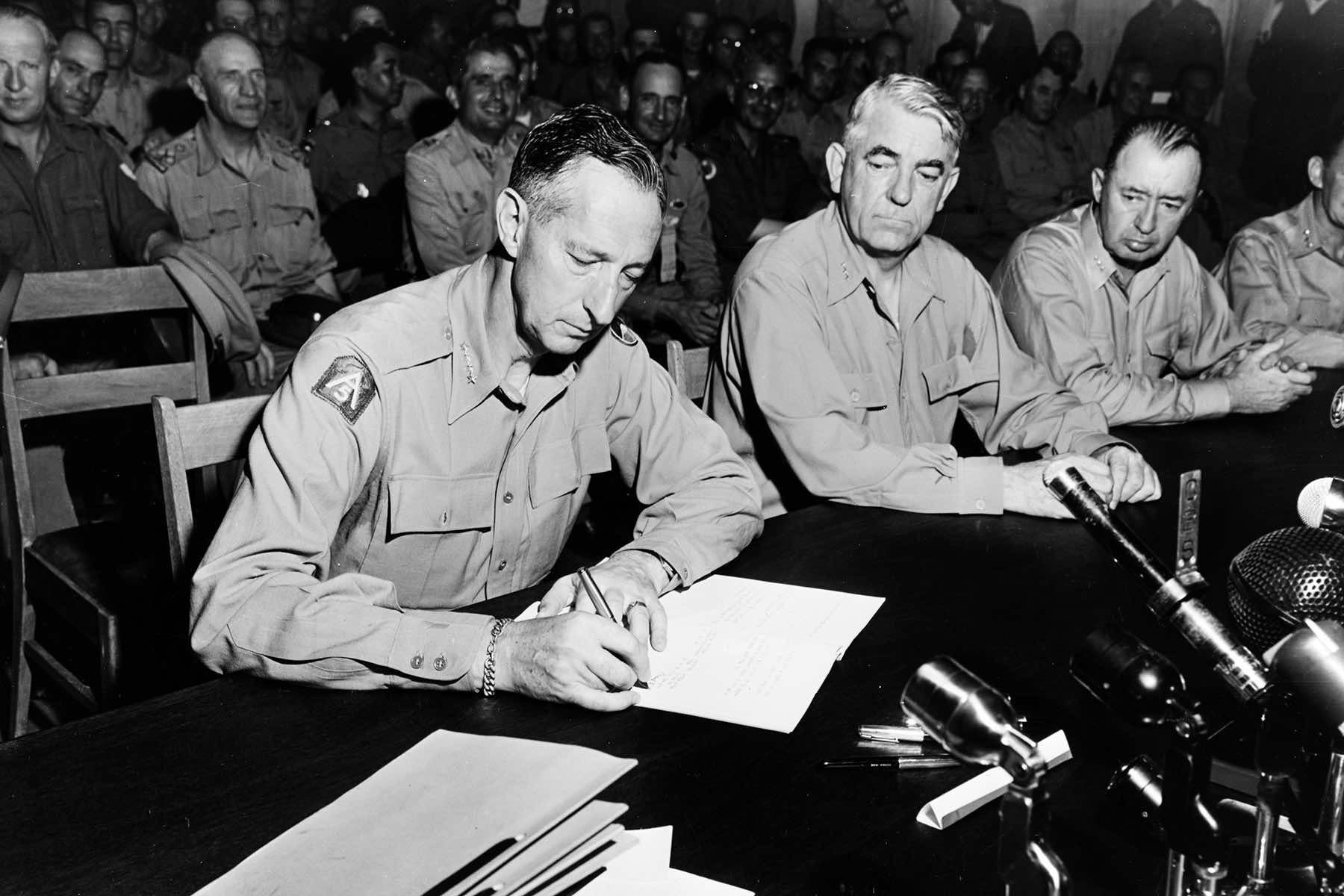
In a modest building at Panmunjom, representatives of the United Nations Command, North Korea, and China signed the Korean Armistice Agreement on July 27, 1953. It brought a halt to three years of brutal fighting on the Korean Peninsula.
The agreement, the result of 158 meetings over more than two years, the longest armistice negotiation in history, ended open hostilities and created the Korean Demilitarized Zone (DMZ), a four-kilometer-wide buffer that still divides North and South Korea today.
Yet the armistice was not a peace treaty. It was a military ceasefire, intended to “insure a complete cessation of hostilities and of all acts of armed force in Korea until a final peaceful settlement is achieved.”
More than seventy years later, that final settlement remains elusive. The peninsula is one of the most heavily fortified and geopolitically sensitive regions in the world.
THE ROAD TO WAR
The roots of the Korean War stem from the collapse of the Japanese Empire at the end of World War II. Korea, colonized by Japan since 1910, was liberated in 1945, only to be divided along the 38th parallel by the United States and the Soviet Union.
The intention was a temporary division, but Cold War tensions quickly hardened the line into a permanent border. In 1948, two rival governments emerged. The communist Democratic People’s Republic of Korea (North Korea) was established in the north, backed by the Soviet Union, and the Republic of Korea (South Korea) in the south, supported by the United States.
On June 25, 1950, North Korean forces, equipped and trained by the Soviets and later reinforced by Chinese troops, launched a surprise invasion across the 38th parallel, aiming to unify the peninsula under communist rule.
The United Nations, with the U.S. at the forefront, responded rapidly by assembling a coalition that pushed the North Koreans back. The war seesawed across the peninsula, with Seoul changing hands multiple times and both sides suffering staggering casualties.
THE LONG ROAD TO THE ARMISTICE
By mid-1951, the front lines had stabilized near the original 38th parallel border, and both sides began to seek a way out of the costly stalemate. Armistice talks opened in July 1951, but progress was agonizingly slow. The main sticking point was the fate of prisoners of war.
Many North Korean and Chinese POWs refused repatriation, fearing persecution or death if they returned home. Negotiators wrangled over every detail, from the precise location of the ceasefire line to the mechanisms for monitoring compliance.
Finally, on July 27, 1953, U.S. Army Lt. General William K. Harrison, Jr., for the United Nations Command, and North Korean General Nam Il, for the Korean People’s Army and the Chinese People’s Volunteers, signed 18 copies of the agreement in English, Korean, and Chinese. The truce went into effect that evening at 10 p.m., silencing the guns but leaving the peninsula divided.
A DIVIDED PENINSULA AND A DIVIDED LEGACY
The Korean Armistice Agreement established the DMZ, withdrew military forces from the buffer zone, and set up mechanisms for the repatriation of prisoners and ongoing military communication. But it did not resolve the underlying conflict.
South Korea’s President Syngman Rhee refused to sign, unwilling to accept a divided Korea and the failure to unify the peninsula by force. No formal peace treaty followed. The 1954 Geneva Conference, where China pushed for a permanent settlement, ended in deadlock after the U.S. declined to pursue a treaty.
The result was a tense and uneasy truce. Over the decades, the DMZ has become one of the most militarized borders in the world. Incidents have ranged from armed clashes to infiltration attempts, and have periodically threatened to reignite conflict. As recently as 2011, North Korea had violated the armistice hundreds of times, according to South Korean defense sources.
FROM COLD WAR TO NUCLEAR STANDOFF
The legacy of the armistice continues to shape the geopolitics of Northeast Asia. The Korean Peninsula remains divided, with two states that have evolved in starkly different directions. South Korea has become a vibrant democracy and economic powerhouse. North Korea withdrew into an isolated, authoritarian regime with a growing nuclear arsenal.
Today, the threat of conflict looms as large as ever. North Korea’s pursuit of nuclear weapons and ballistic missiles has transformed the security calculus. Any renewed war would be catastrophic not just for Korea, but for the region and the world.
The North’s repeated missile tests and nuclear detonations have prompted waves of international sanctions and condemnation, but have not halted its weapons programs.
A NEW COLD WAR AND SHIFTING ALLIANCES
In a reversal of the dynamics that shaped the original conflict, North Korea now finds itself aligned with Russia in the context of the ongoing unprovoked war in Ukraine. During the Korean War, the Soviet Union was North Korea’s primary patron, providing weapons, training, and diplomatic support.
Today, as Russia faces international isolation over its brutal full-scale invasion of Ukraine, Pyongyang has emerged as a key supplier of munitions and military equipment to Moscow. It is a role reversal of the 1950s, with the once-dependent client state now wielding leverage over its former benefactor.
The renewed partnership has raised alarms in Seoul, Washington, and Beijing, as North Korean arms shipments help sustain the Russian war effort. In exchange, North Korea has recieved advanced military technology from Russia and diplomatic backing from its dictator, Putin.
SOUTH KOREA’S POLITICAL UNCERTAINTY
The Korean Peninsula’s security landscape has grown more complex with recent political changes in South Korea. The conclusion of President Yoon Suk-yeol’s administration and the election of his successor have introduced both cautious optimism and strategic ambiguity.
The incoming government must now navigate the increasingly volatile balance between deterrence and diplomacy, balancing pressure on Pyongyang with the need to preserve regional stability.
South Korean society remains deeply anxious about the North’s accelerating weapons programs, as well as the growing entanglement of the peninsula in broader geopolitical rivalries. The new president inherits alliances strained by an unstable U.S. president, global conflict, and a divided domestic electorate.
THE ARMISTICE’S UNFINISHED BUSINESS
Seventy years after its signing, the Korean War armistice remains a symbol of unresolved conflict. Without a formal peace treaty, the Korean War has never technically ended. This legal ambiguity has been used by both Koreas to justify extensive military spending, mandatory conscription, and the preservation of one of the world’s most fortified borders.
Attempts to move beyond the armistice have been intermittent and ultimately unsuccessful. The 2018 inter-Korean summits and the high-profile meetings between North Korean leader Kim Jong Un and then-U.S. President Donald Trump briefly generated momentum.
Statements expressing mutual intent to “work toward a peace regime” and pursue “complete denuclearization” raised global expectations. But those efforts quickly stalled. North Korea refused to make substantive moves toward disarmament, and the United States declined to ease sanctions without verifiable steps.
The result was another breakdown, another missed opportunity. The DMZ, once envisioned as a temporary barrier, endures as a heavily militarized buffer. It is a reminder that the war was paused, but not resolved.
THE SEARCH FOR LASTING PEACE
The shadow of July 27, 1953, continues to stretch across the peninsula. The armistice halted the fighting but froze the war in place, locking generations into a state of vigilance without resolution.
Today, with each missile launch, border skirmish, or diplomatic overture, the legacy of that ceasefire resurfaces. Any path forward will demand more than momentary summits or symbolic declarations. It will require sustained, multilateral engagement, anchored in realism and historical context.
The lessons of the armistice show the price of miscalculation, the fragility of ceasefires, and the profound human cost of unresolved division.
As the world marks yet another anniversary of that halted war, the urgency for a lasting peace continues. Until then, the guns may be silent, but the conflict persists and echoes far beyond the barbed wire of the DMZ.
© Photo
U.S. Navy (via National Archives) and AP (File Photo)

